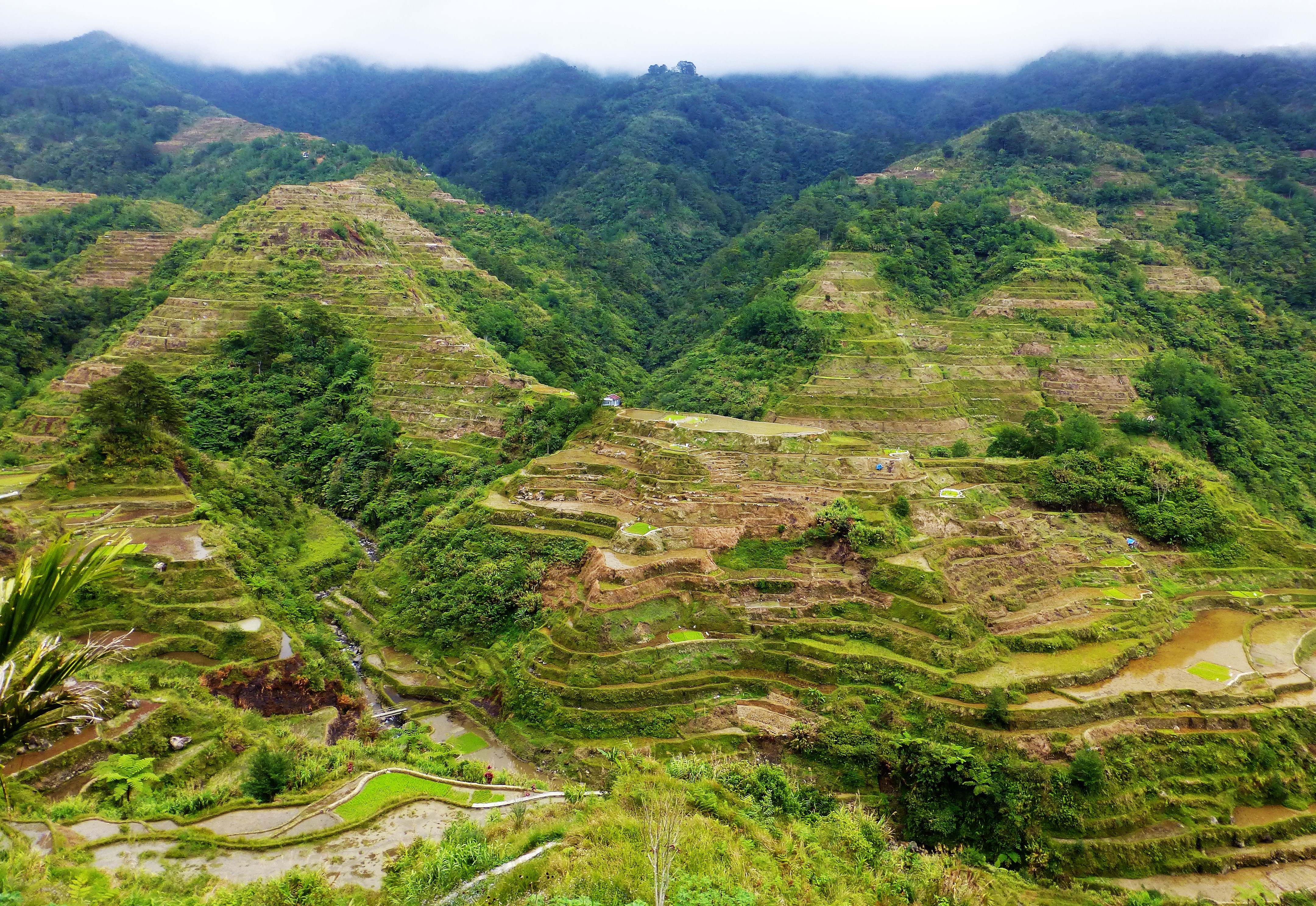After an overwhelming first day in Manila, with an unsettling feeling from all the homeless families near Intramuros, I knew for sure: I needed to head to the mountains. To the ancient rice terraces of Banaue. That decision became one of the highlights of my first Philippines trip.
Why the Banaue Rice Terraces Belong on Your Bucket List
The rice terraces in the Cordillera mountains are over 2000 years old and are often called the ‘Eighth Wonder of the World’. They were carved by hand by the Ifugao tribe and stretch across 10,000 square kilometers of mountain slopes.
Did you know that if you lined up all these rice terraces end to end, they would reach halfway around the globe?
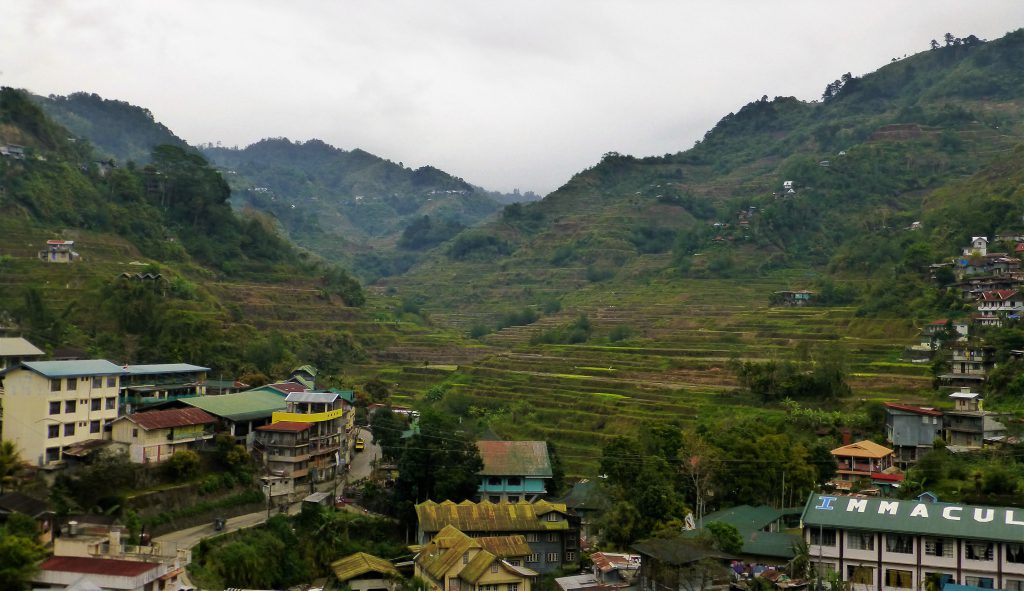
In 1995, UNESCO recognized five rice terrace clusters as World Heritage Sites: Batad, Bangaan, Hungduan, Mayoyao and Nagacadan. But what makes these terraces so special? They still function exactly as they did centuries ago, with the community still working with the same integrated irrigation system.
From Manila to Banaue: Practical Travel Information
How to Get to Banaue?
By night bus (my experience): After one day in Manila, I’d had enough and immediately booked a comfortable night bus to Banaue. This is by far the most popular option for backpackers:
- Bus companies: Ohayami Trans, Coda Lines, or KMS Transport
- Departure time: Between 8:00 PM-10:45 PM from Cubao or Sampaloc in Manila
- Travel time: 9-10 hours (depending on traffic and road works)
- Cost: ₱650-900 (€10-13) for aircon bus, ₱800-1000 (€12-15) for sleeper bus
- Booking: Online or on-site at the bus station
Tip: Bring warm clothing! It gets surprisingly cold at night in Banaue (10-15°C). From Manila to Banaue
Arriving in Banaue: First Impressions
When I stepped off that night bus early in the morning, the fresh mountain air hit me right in the face. What a relief after suffocating Manila! The temperature was pleasantly refreshing, around 18°C. Banaue itself is a small mountain village with everything perfectly organized for tourists.
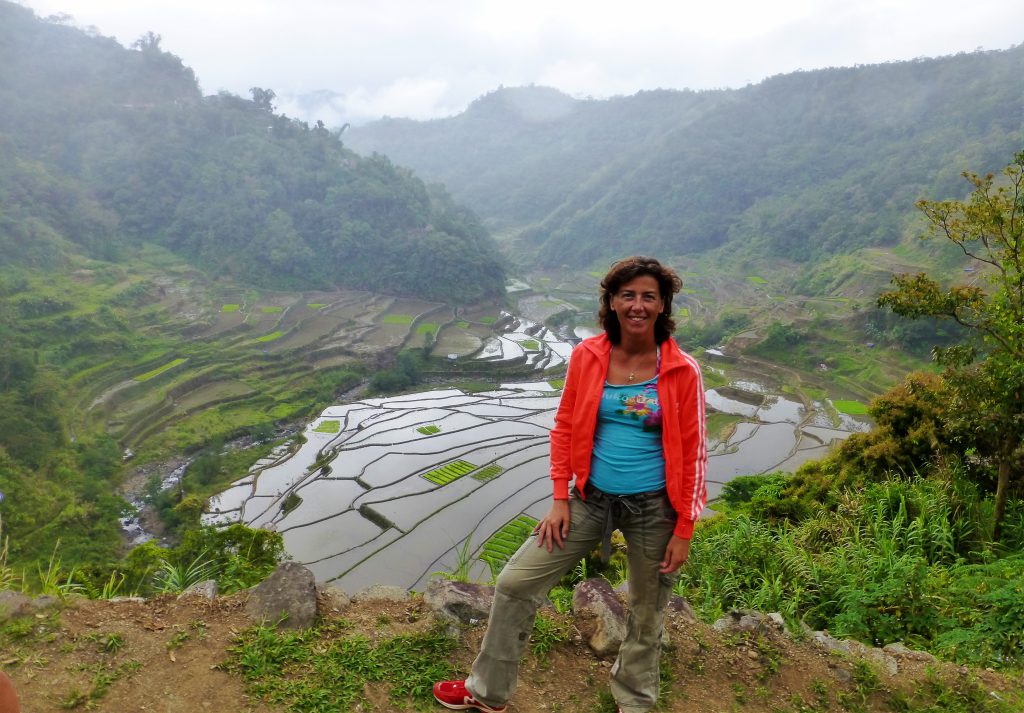
My Accommodation in Banaue
Within an hour of arrival, I’d found a room at People’s Guesthouse (€20) per night. A very simple room – I got the last room available which didn’t even have a window 🙂 But they have the most spectacular terrace you can imagine: views over the rice terraces while you have breakfast!
Eating in Banaue
Breakfast on the terrace of People’s Guesthouse with that insane view… these are truly the moments why I travel! Most guesthouses have restaurants where you can eat for ₱150-300 (€2-4).
Recommendations:
- Uyami’s Green View Restaurant – Local Ifugao dishes
- People’s Restaurant – Filipino classics
- Las Vegas Lodge & Restaurant – Local Ifugao dishes
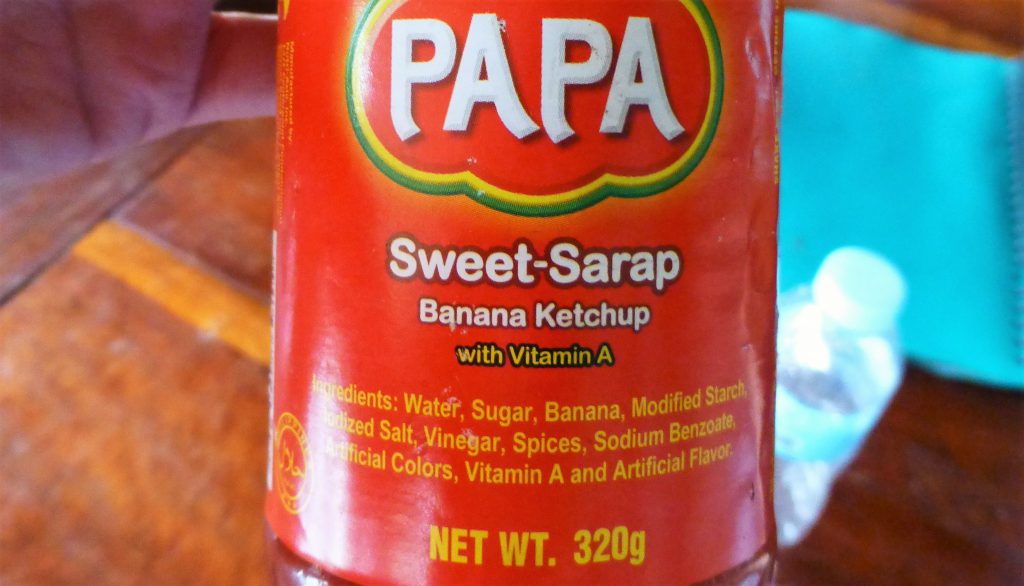
By the way, did you know that Filipinos are obsessed with sweet things? They even invented banana ketchup – I was stunned when I read the label!
Day 1: Trekking to Batad and Tappiya Waterfall
Booking the Tour
Just like at most backpacker guesthouses, I could book a day tour immediately at People’s. This is easy to do on-site, often cheaper and more fun because you go with other travelers.
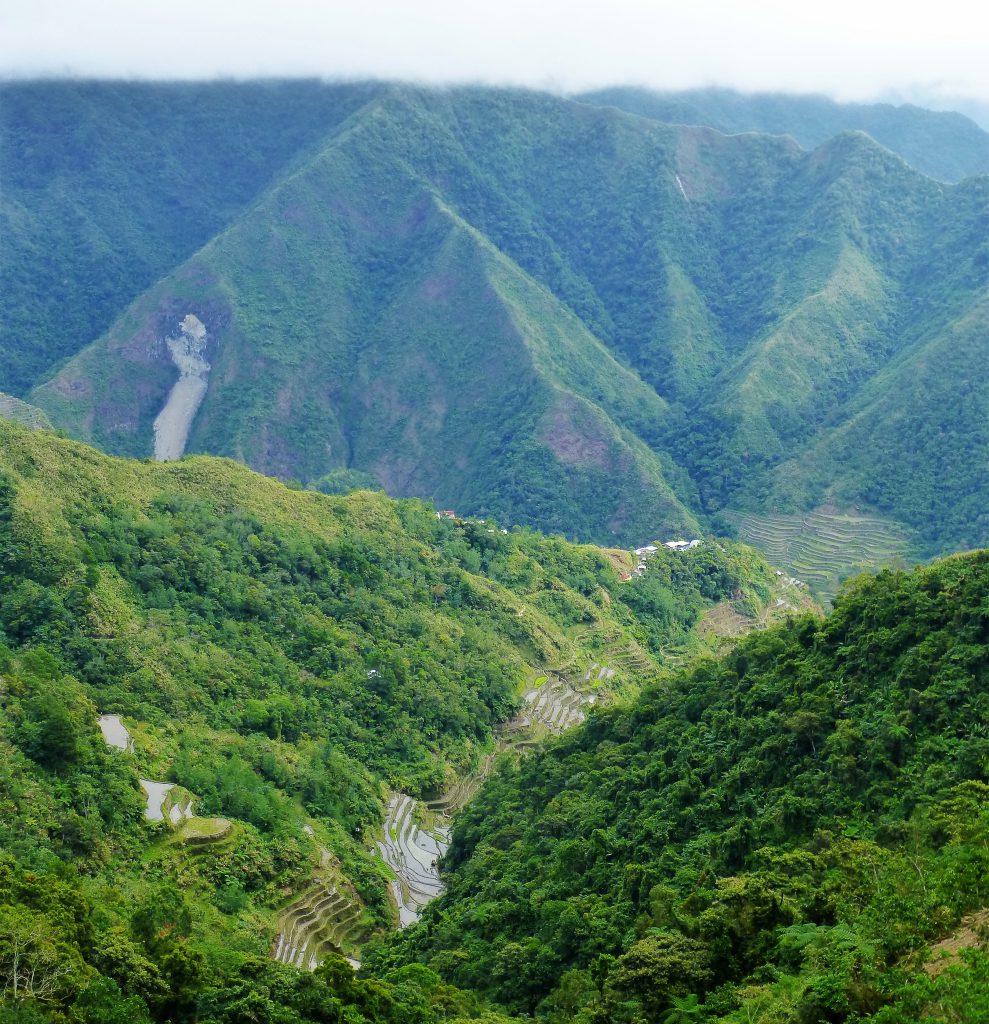
The Ride to Batad
We went up into the mountains in jeepneys. The jeep was… let’s say ‘authentic’. And so was the road! When I was there, they were working hard to improve the road, and I hope it’s better now, but honestly I thought it was great. The more adventurous, the better, right?
The ride takes about 45 minutes over a bumpy mountain road with spectacular views and hair-raising turns.
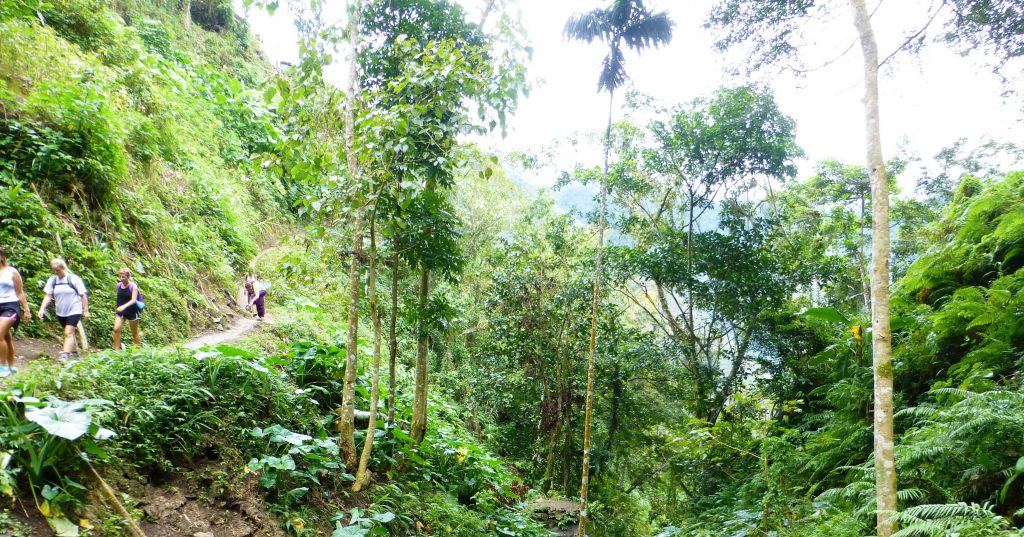
402 Steps Down
At the starting point, we had a choice: rent a walking stick or not. The 63-year-old Frenchman in our group took one, and that was wise of him in hindsight. At the same time, several doctors went with us to the villages with bags full of medicine.
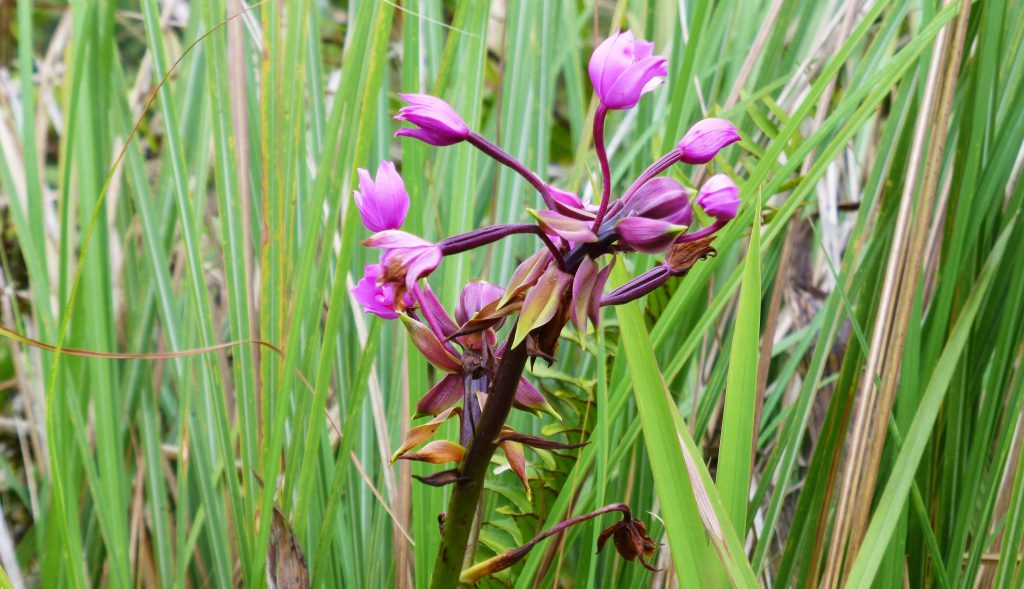
The descent: The first part was a staircase of 402 uneven steps downward. The steps are naturally formed and irregular, so you have to pay constant attention. But every time I stopped to catch my breath, I was rewarded with increasingly beautiful views.
After those many steps, the path turned into a jungle trail, slippery from earlier rain. But what views! Bit by bit, I got a better picture of what awaited me below.
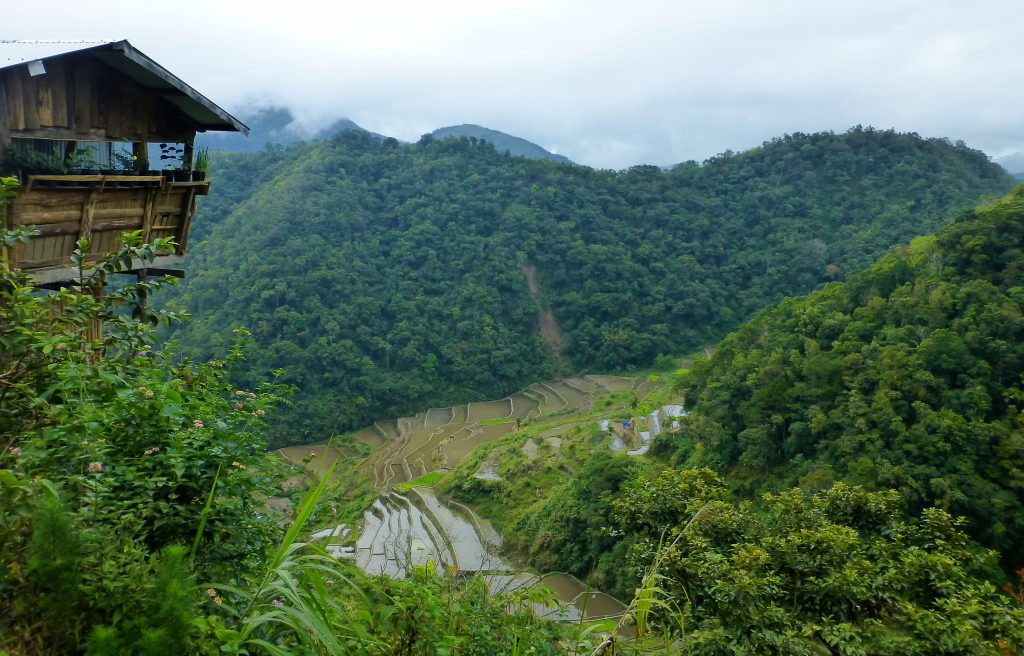
The Village of Batad
Batad is the birthplace of our guide TJ. He told us about daily life: the community still works according to the old system of ‘bayanihan’ – a system of mutual help without immediately receiving a reward. When harvesting needs to be done, everyone comes together. One day you work at family A’s place, the next day they come help you.
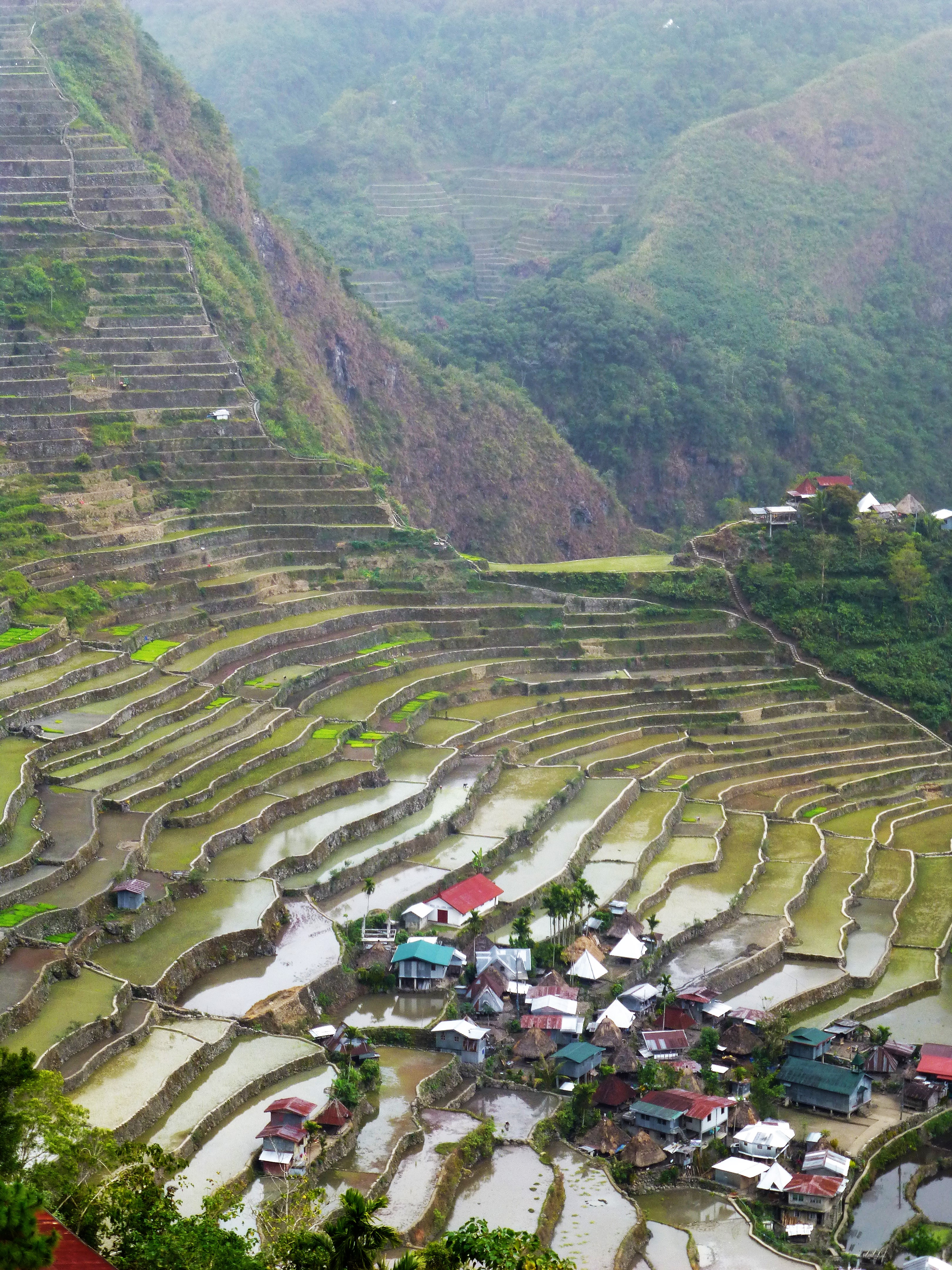
Interesting facts about rice cultivation in Batad:
- Each family manages an average of 5-10 terraces
- There is no fixed season – planting and harvesting happens year-round
- That’s why you always see both green and empty terraces
- A terrace produces rice 2-3 times per year
- The irrigation system comes from the mountains via bamboo channels
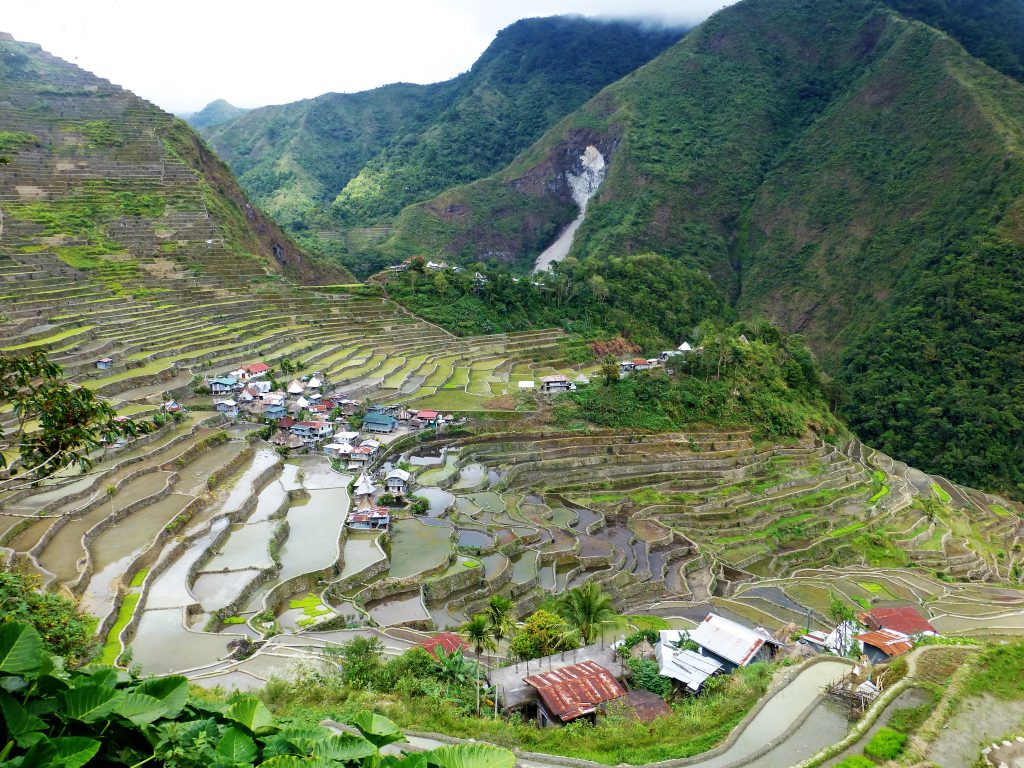
Lunch with a View in Batad
In Batad, we had lunch with the first real view over the amphitheater-shaped rice terraces. This moment – sitting there with my lunch, looking out over this 2000-year-old landscape… These are the moments why I travel and can feel truly intensely happy.
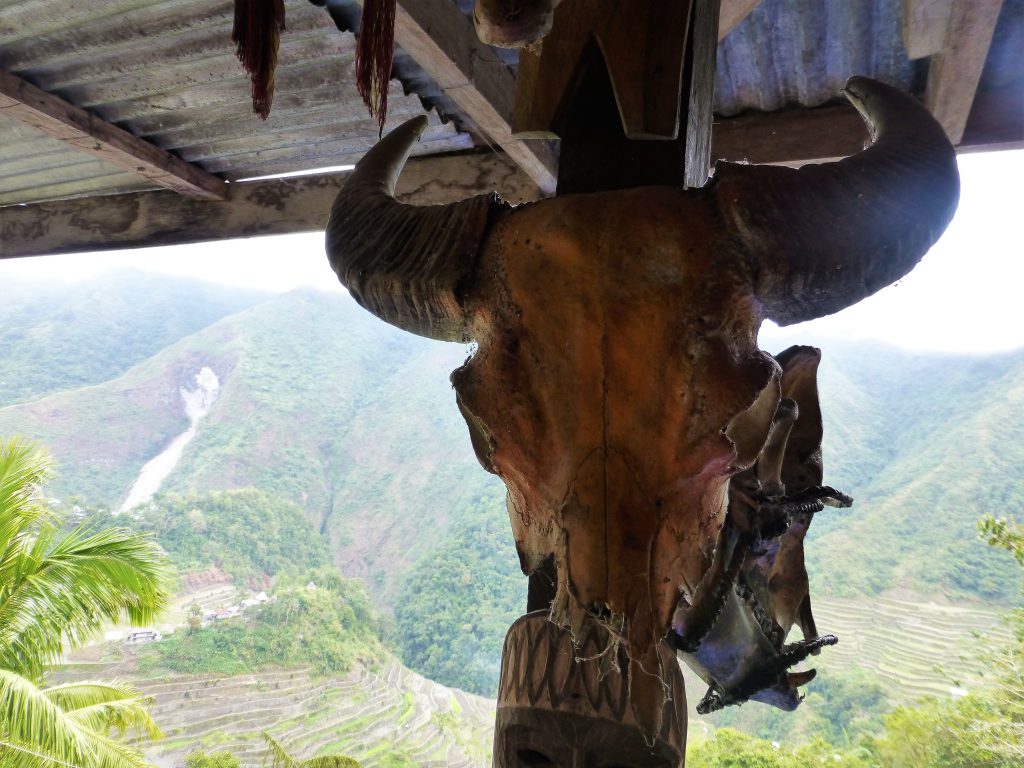
Did you know you can also stay overnight here? How unique is that?
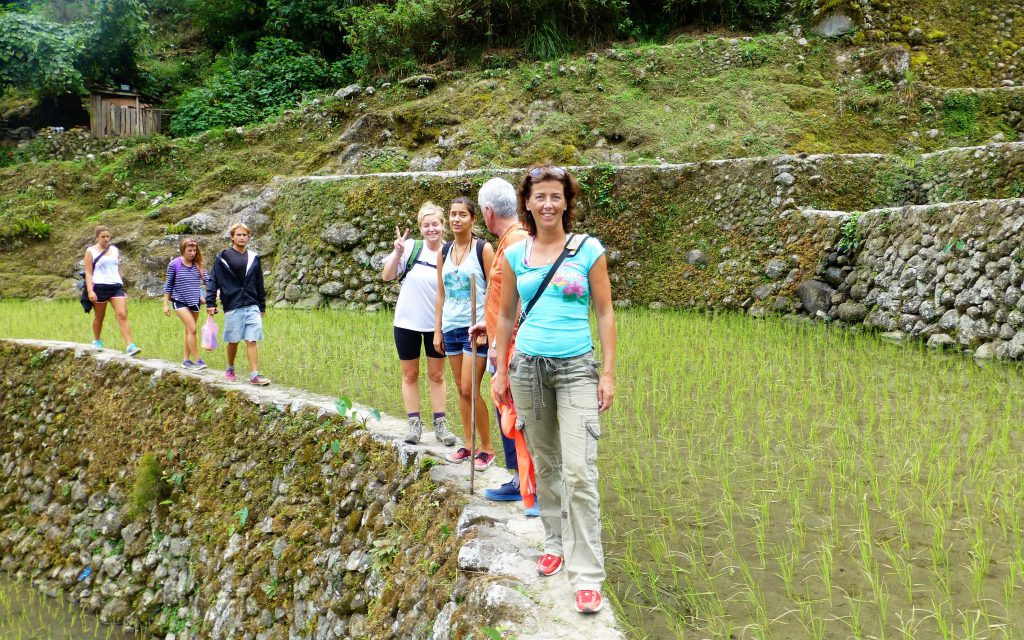
Walking Over the Rice Terraces
And then I could finally walk where I’d been looking forward to all along: over the rice terraces themselves, just like the locals! The edges of the terraces are made of a hardened clay-mud mixture. Incredibly sturdy, even though many people walk over them daily. The paths are sometimes only 20-30 cm wide. If you have decent balance, it’s manageable.
I looked ahead and just walked, experiencing no problems or imbalance. If you look down too much at your feet and the narrow path, you’re more likely to lose your balance.
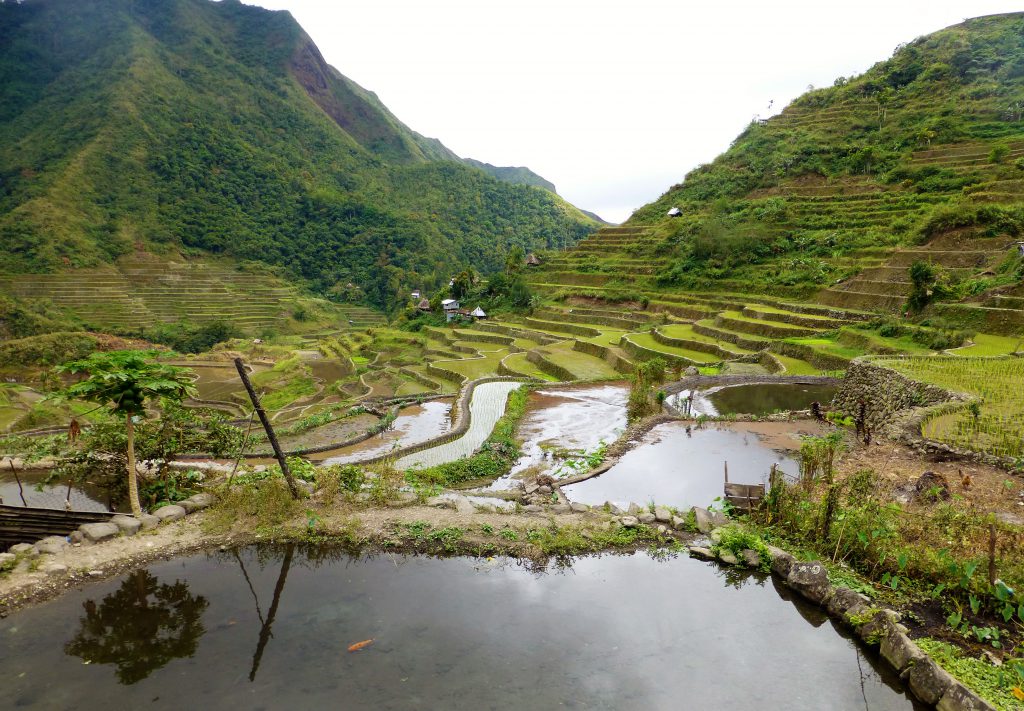
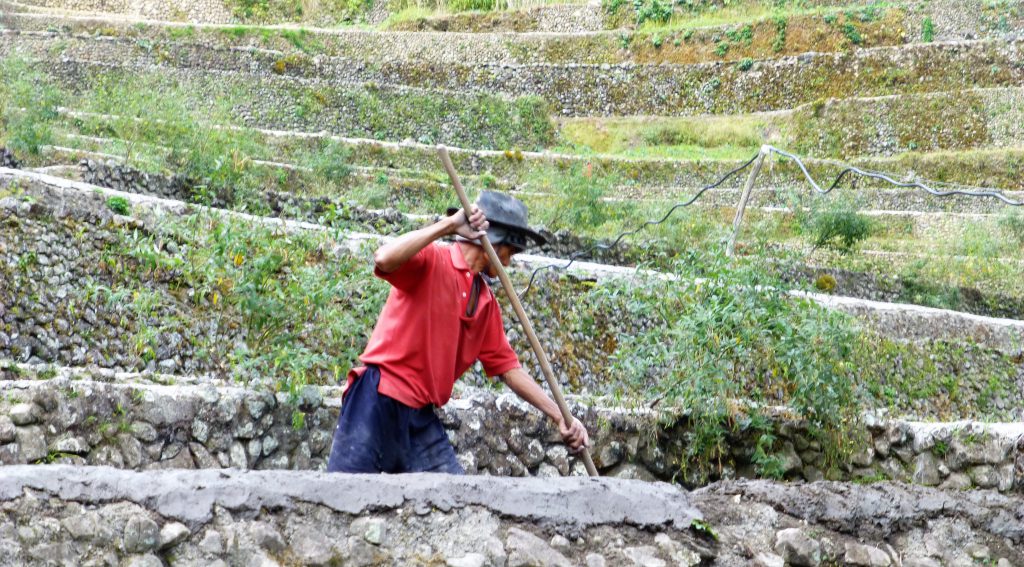
What struck me:
- The landscape constantly changes as you follow the curves of the terraces
- Stones jutting from the walls form natural stairs between levels (see my photo later at Hapao)
- Some paths are centuries old, others newer and wider for tourists
- The lovely babbling sound of water flowing through bamboo channels
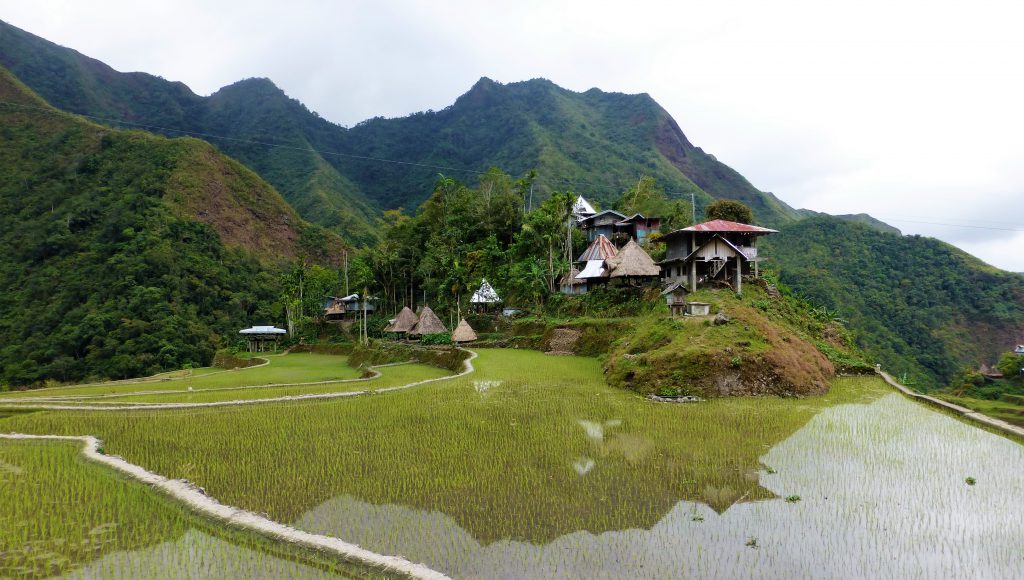
Swimming at Tappiya Waterfall
After about 2 hours of walking, we reached Tappiya Waterfall. Not everyone dared to go in the water. You had to walk over slippery stones and the changing area was far away. But after such a trek, I didn’t come all this way to stay on the sidelines!
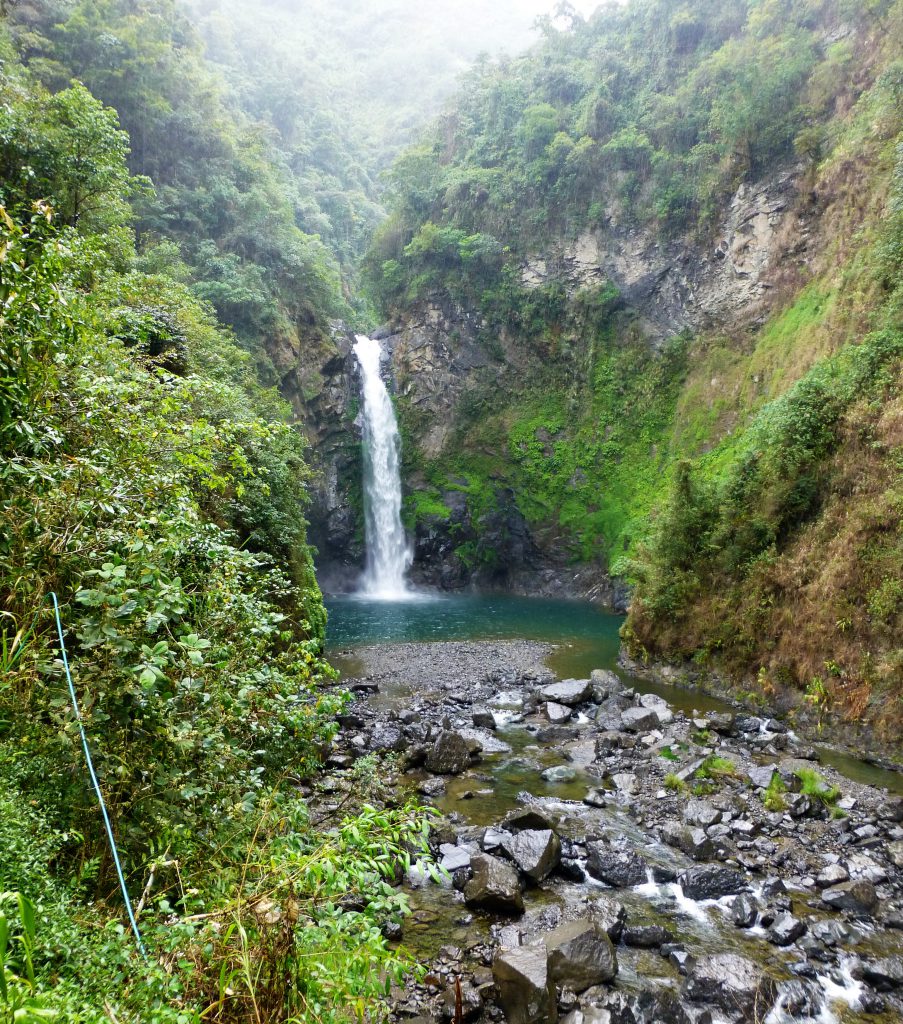
The water was ice cold, but after that sweaty hike, incredibly refreshing. And that 63-year-old Frenchman? He was the first one in the water!
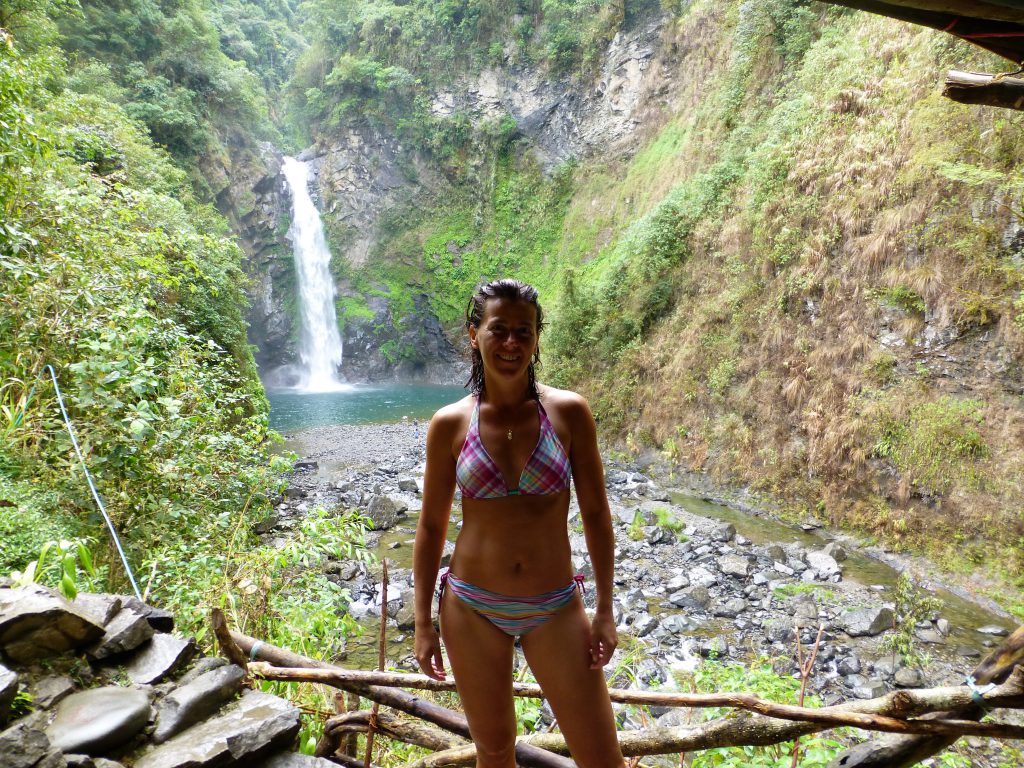
Via the same route, we walked back. Some in our group had thought ahead and booked overnight accommodation in Batad – if only I’d known earlier. How special it would be to stay overnight in such a small mountain village! We climbed the 402 steps back up, and even the Frenchman did well.
Back in Banaue, we enjoyed a well-deserved dinner.
What to Bring on This Trek:
- Powerbank for your camera
- Good hiking shoes (slippery!)
- Sufficient water (bring a refillable bottle)
- Sun protection (you burn even when cloudy)
- Rain jacket (weather can change quickly)
- Swimwear + quick-dry towel for the waterfall
- Cash (no ATMs along the way)
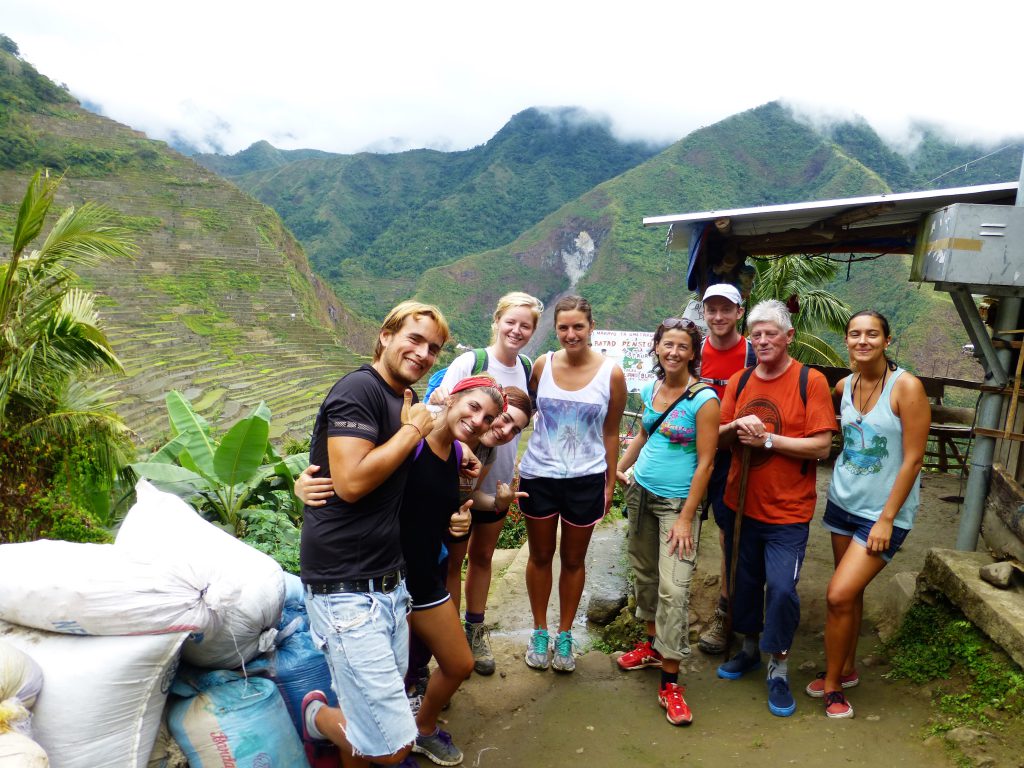
Day 2: Hapao Rice Terraces – Less Touristy, Equally Beautiful
I hadn’t nearly had enough of this unique area, so the next day I went with a Canadian traveler to Hapao – an area that’s less well-known but just as beautiful.
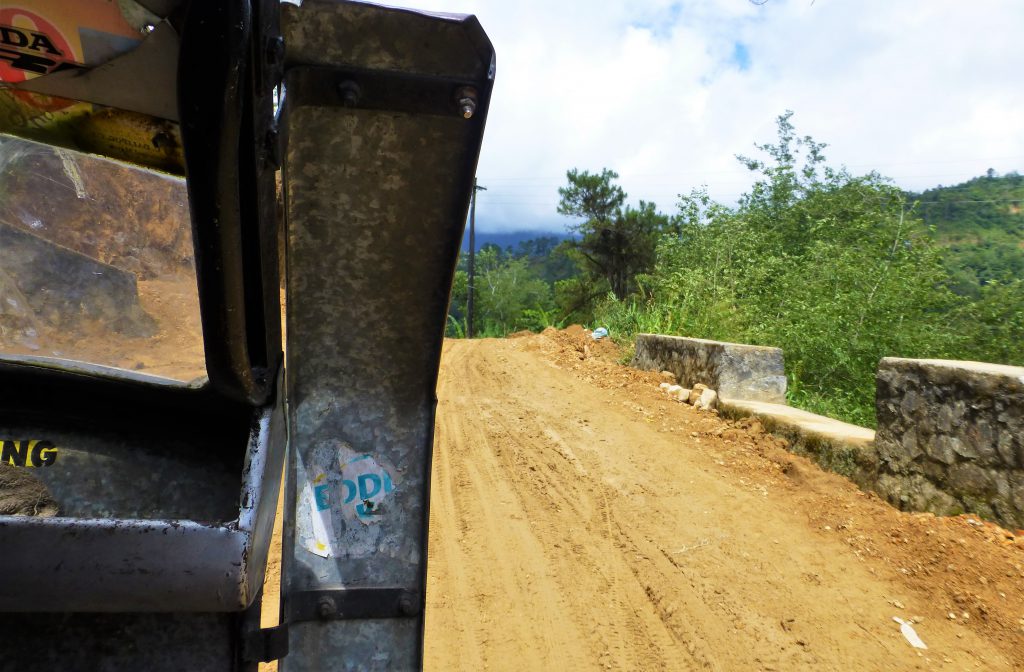
Transport to Hapao
We rented a tricycle for the whole day (₱1500 / €22 for both of us). The advantage? We could stop wherever we wanted for photos. And that freedom, with the wind in your hair and all the scents of the mountains… that makes it complete.
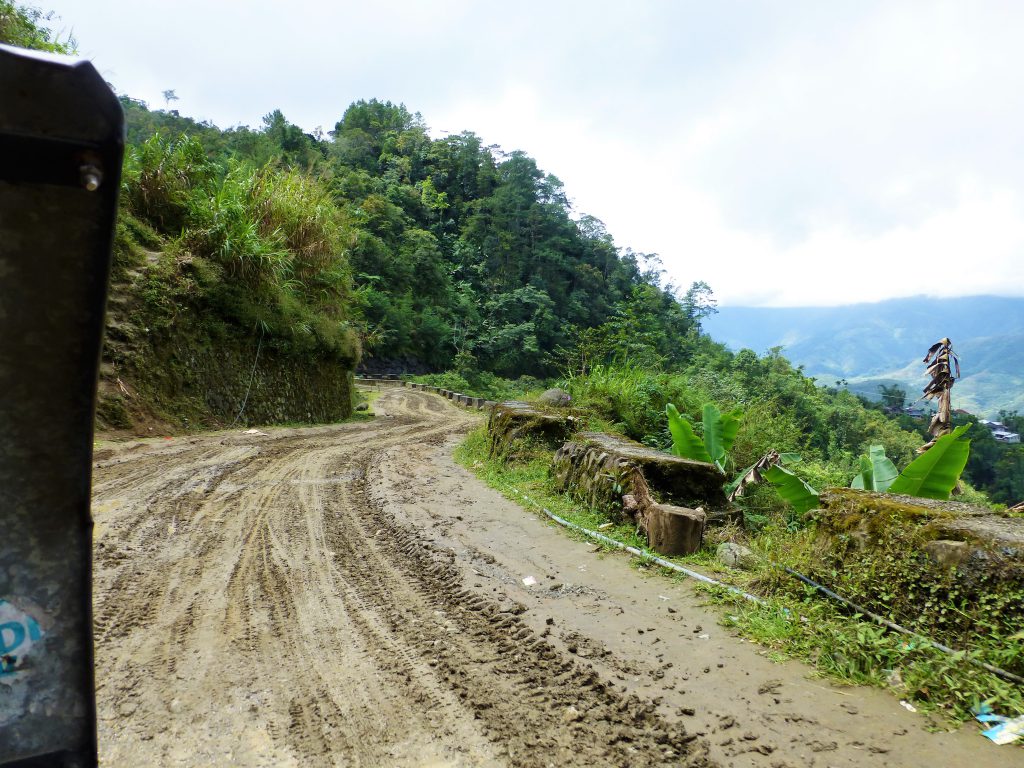
The road to Hapao is comparable to the one to Batad – challenging and a wonderful part of the adventure. I thoroughly enjoyed it!
Hiking at Hapao
All day we walked over various paths on the rice terraces. At Hapao, we really had time to absorb the feeling of the environment. Because fewer tourists naturally means more peace to enjoy.
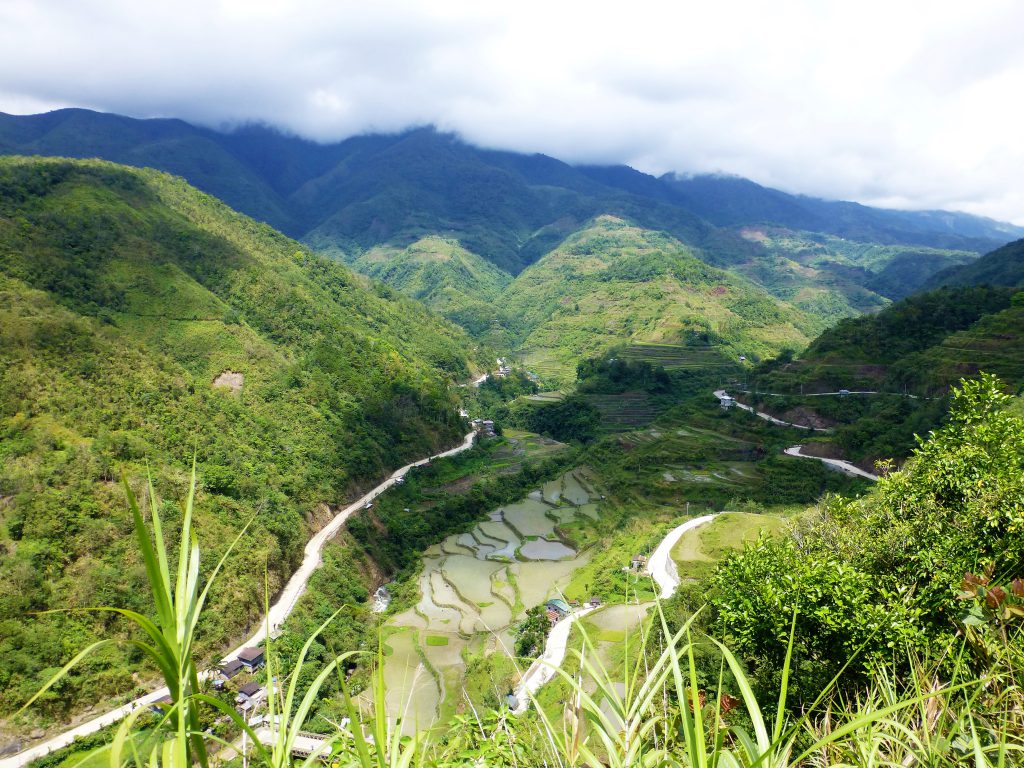
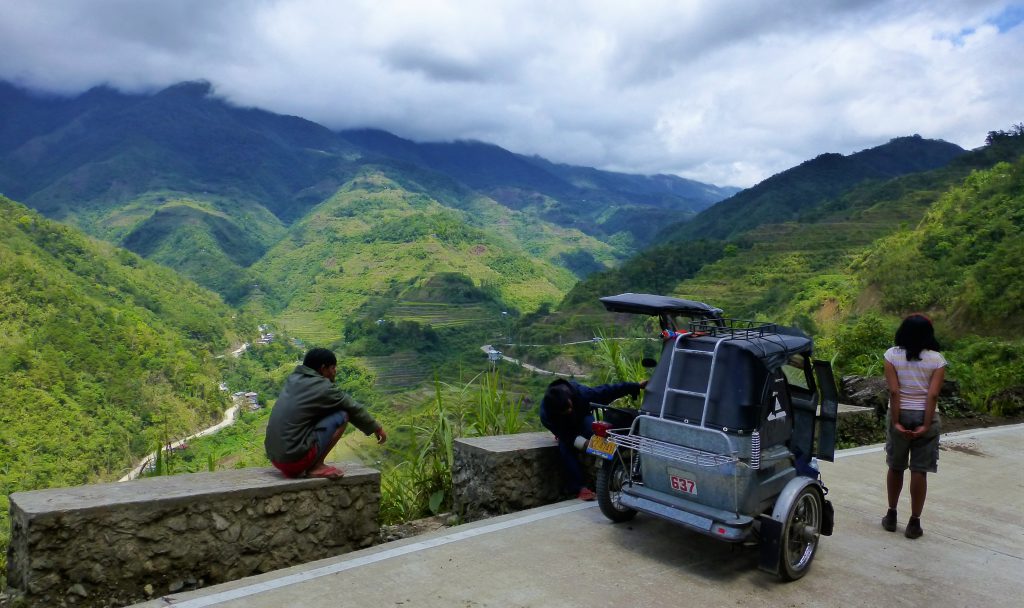
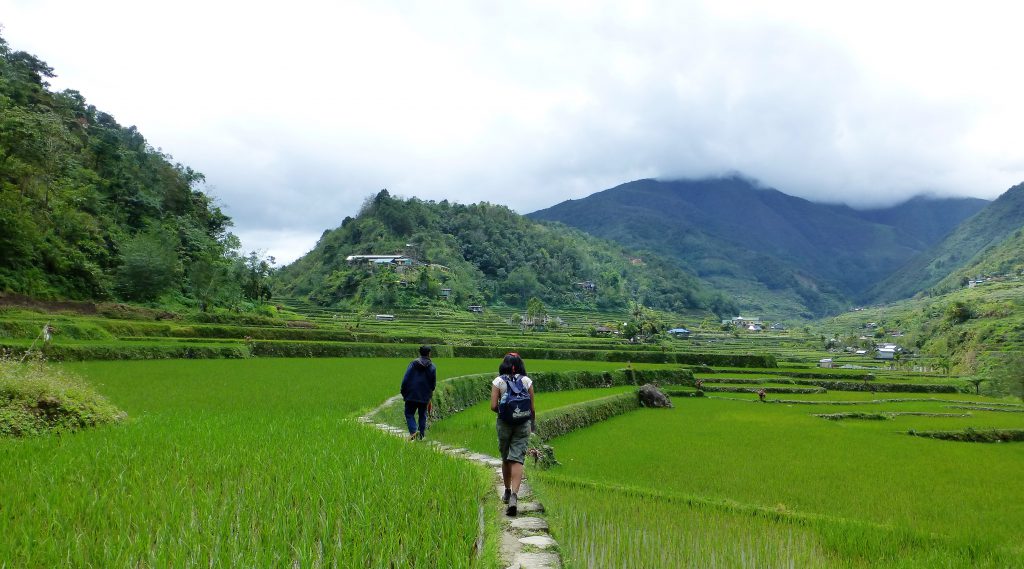
Here I also took that photo where I climb those natural stairs in the terrace wall. Do you see how stones protrude from the wall as steps? So simple but so effective! For me it was very easy to go up and down like this, but I was amazed how difficult my Canadian buddy found this.
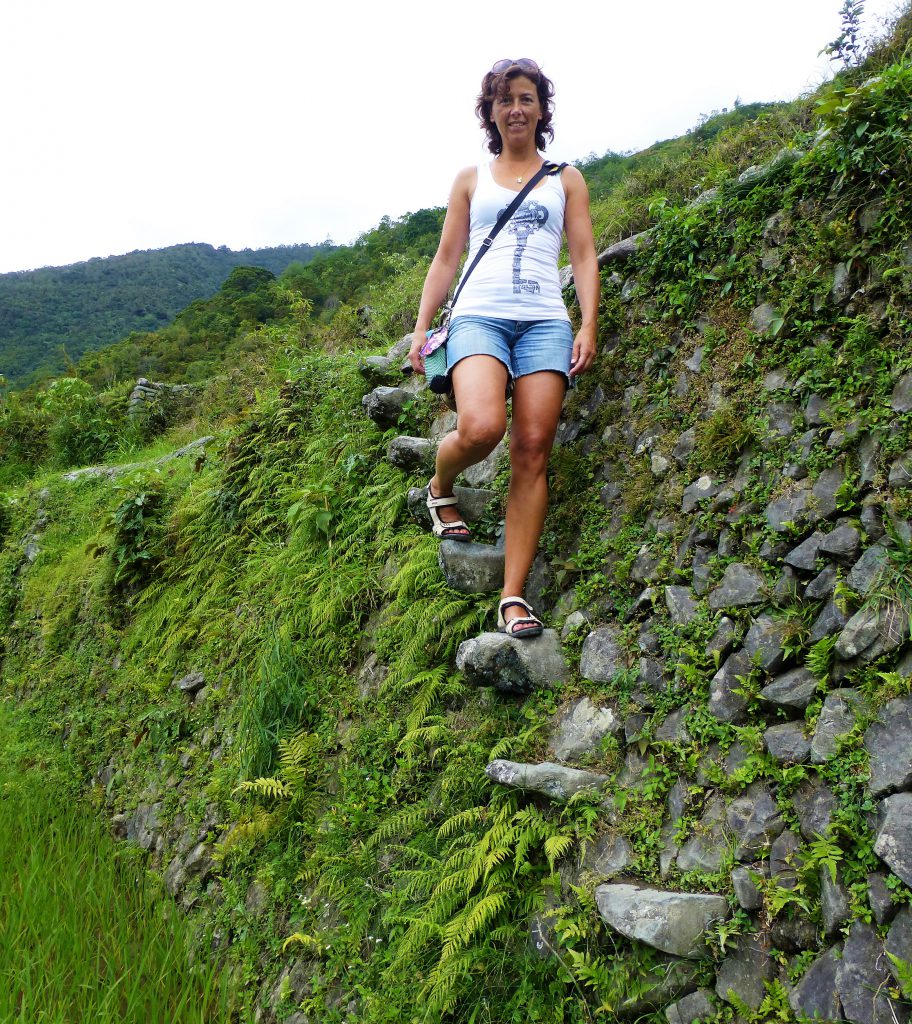
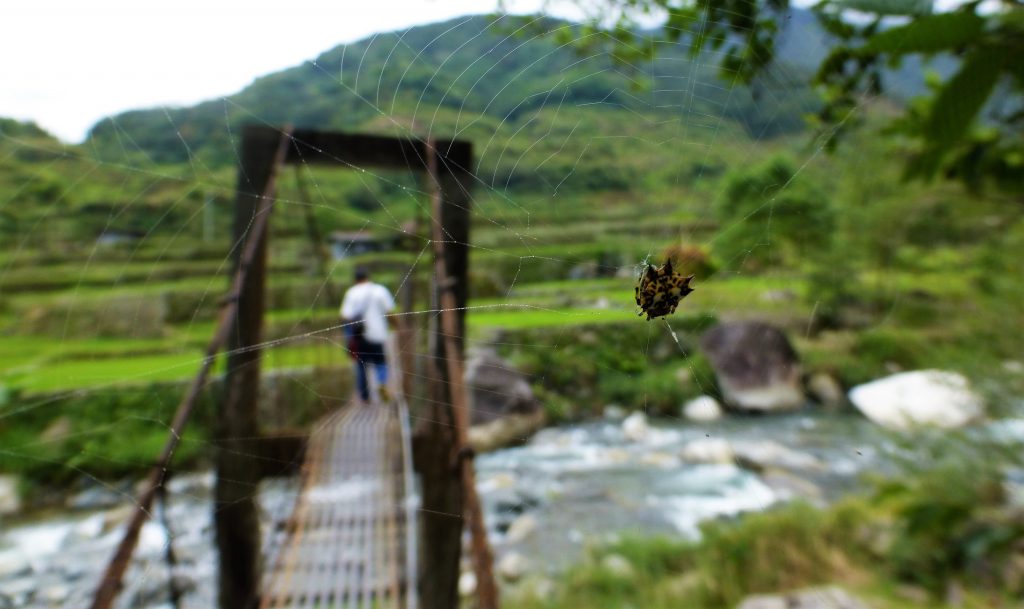
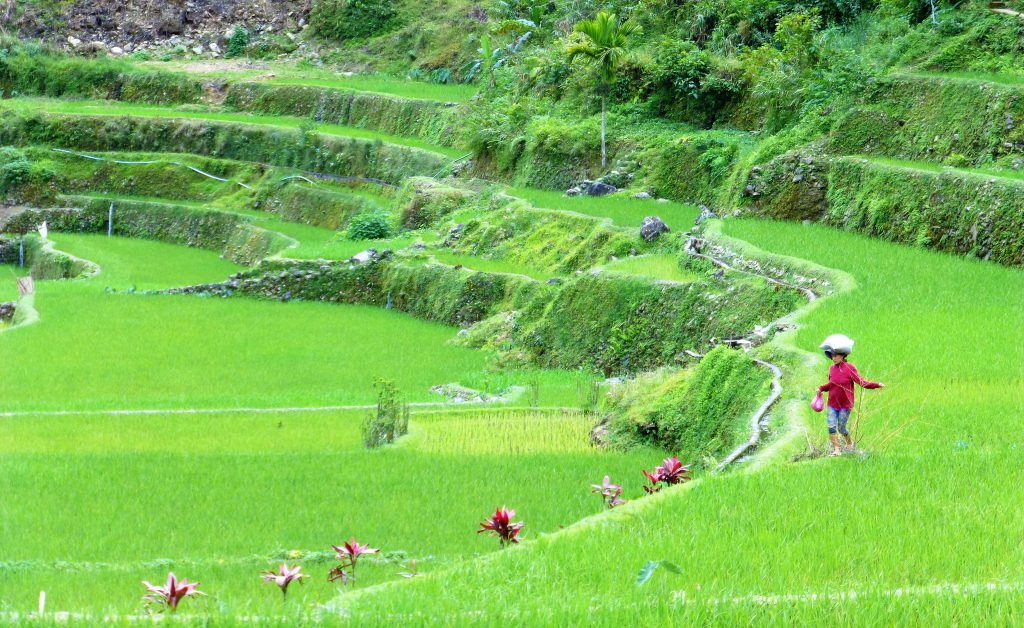
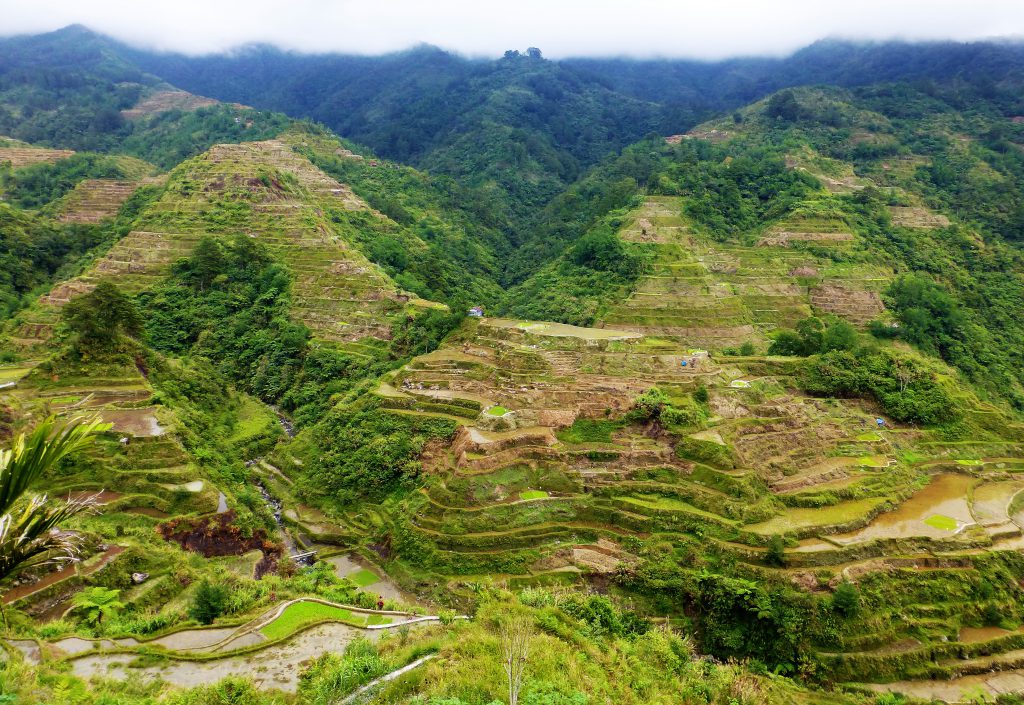
Viewpoint at Hapao
The last stop of this day was a well-known viewpoint. For us also the last glimpse of this special area. I was glad I was with that Canadian, she had researched everything well. It always pays to trek together or exchange tips with other travelers while on the road!
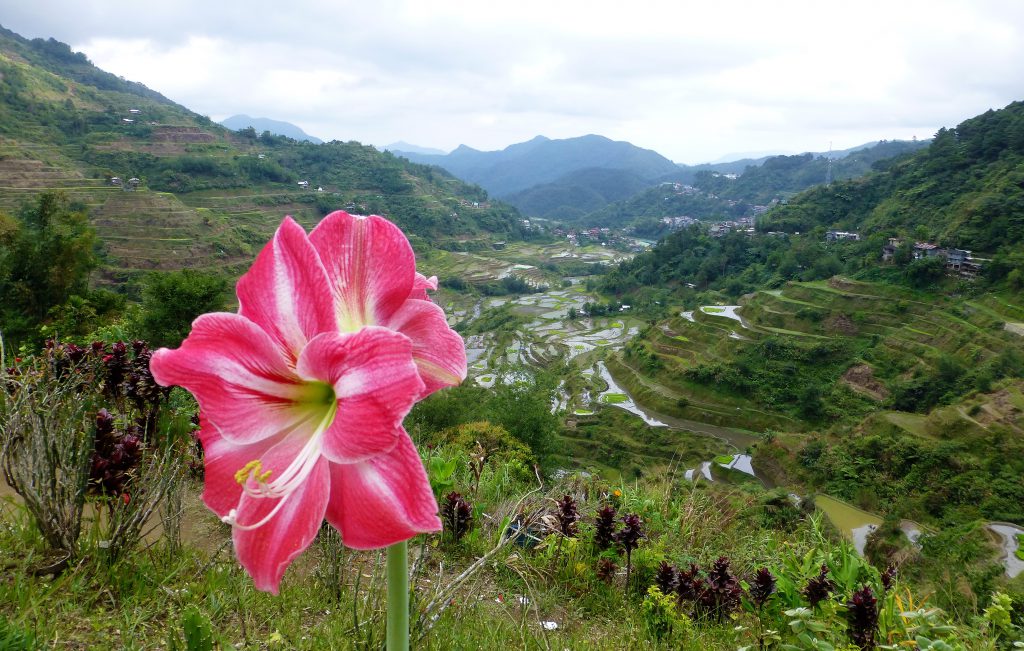
Other Rice Terraces in the Region
Do you have more time in this unique area of the Philippines? Then explore these places in addition to the beautiful rice terraces of Batad and Hapao:
Bangaan:
- 30 minutes from Banaue
- Easier trek, good for beginners
Hungduan:
- 1 hour from Banaue
- Least touristy
- Ideal for photography
Mayoyao & Nagacadan:
- 2-3 hours from Banaue
- UNESCO sites but difficult to reach
- For adventurers
Do you prefer to book your trip in advance with everything arranged from Manila? Check out this 4-day trip which also includes a visit to Sagada.
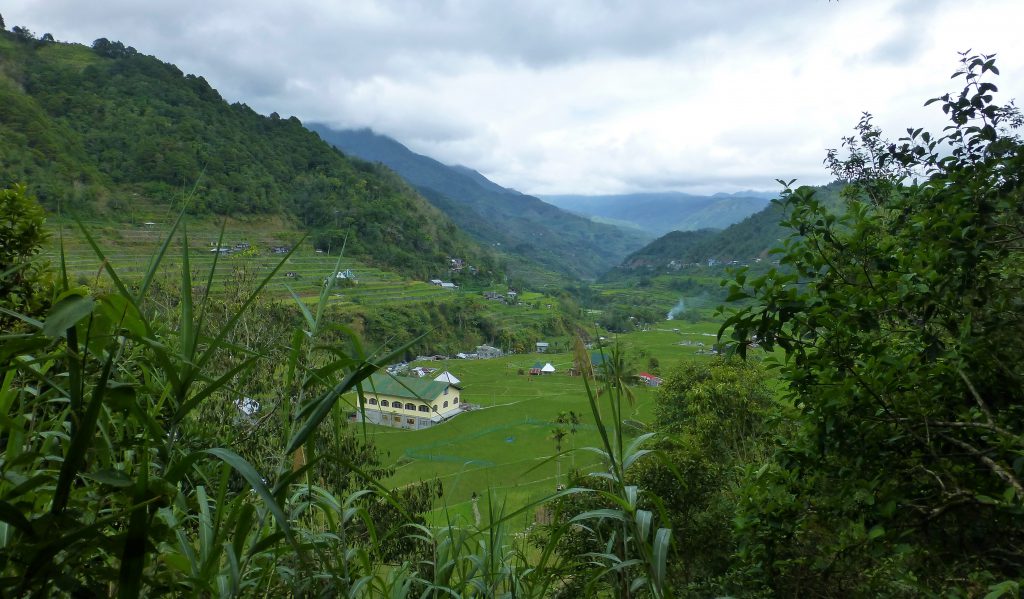
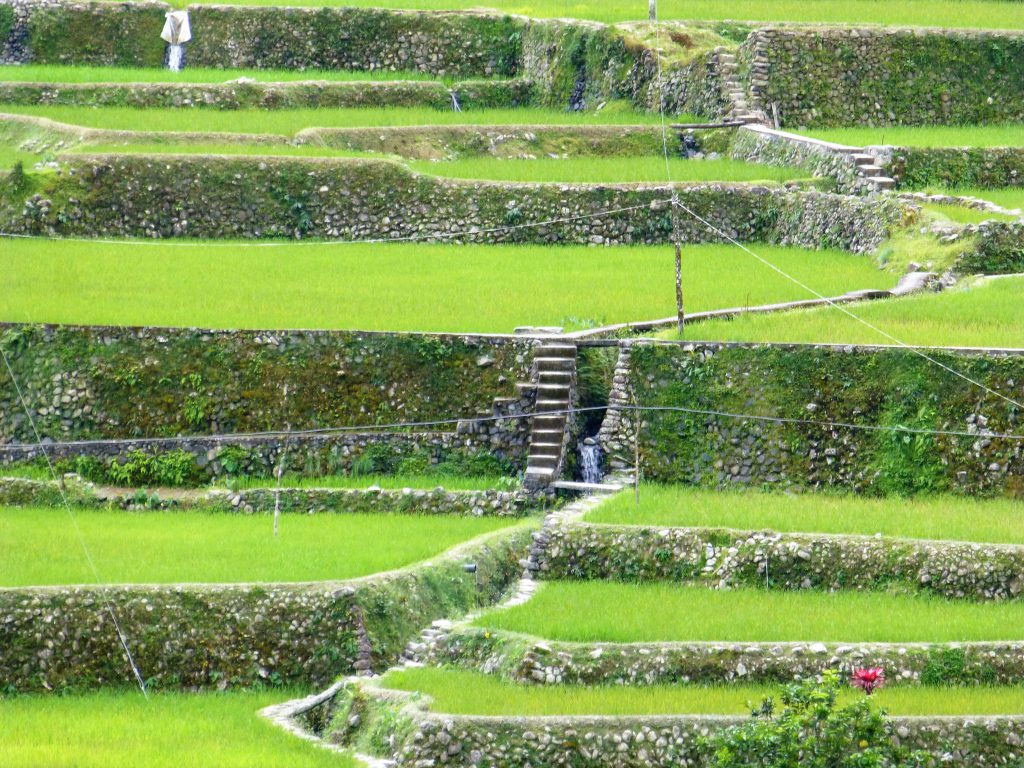
Practical Tips for Banaue
Withdrawing Money
There are limited ATMs in Banaue! Bring enough cash from Manila or Baguio. Some larger hotels accept credit cards, but virtually all guesthouses and restaurants are cash-only.
What to Pack for Banaue
Essential:
- Sturdy hiking shoes (no sneakers!)
- Warm clothing for evenings (fleece/sweater)
- Rain jacket year-round
- Sun protection (cap, sunscreen)
- Insect spray (mosquitoes in rainy season)
- Medication (paracetamol, Imodium)
- Cash
- Powerbank
Health and Safety
- Altitude: Banaue is at 1200m, Batad at 1500m. Not a problem for most people, but drink plenty of water.
- Water: Only drink bottled water. Some guesthouses offer free refills with filtered water.
- Guide needed? For Batad and Hapao, guides are mandatory – and rightly so. The paths are sometimes unclear and they share valuable knowledge. Book through your accommodation or at the Tourism Office.
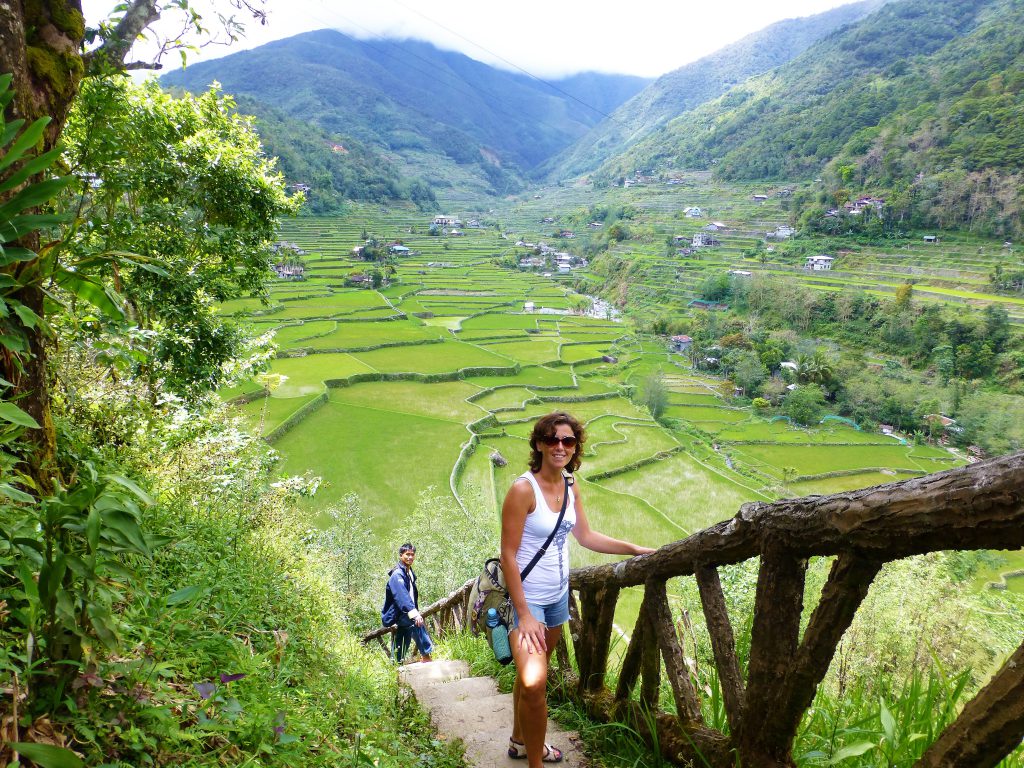
Responsible Travel in Banaue – The Philippines
These rice terraces are living cultural heritage. Travel sustainably and respectfully:
Do’s:
- Ask permission for photos of people
- Stay on the paths (not through the rice fields!)
- Buy local products and crafts
- Eat at local restaurants
- Take your trash back with you
Don’ts:
- No smoking on the rice terraces
- No throwing away plastic or trash
- No spitting out gum or candy
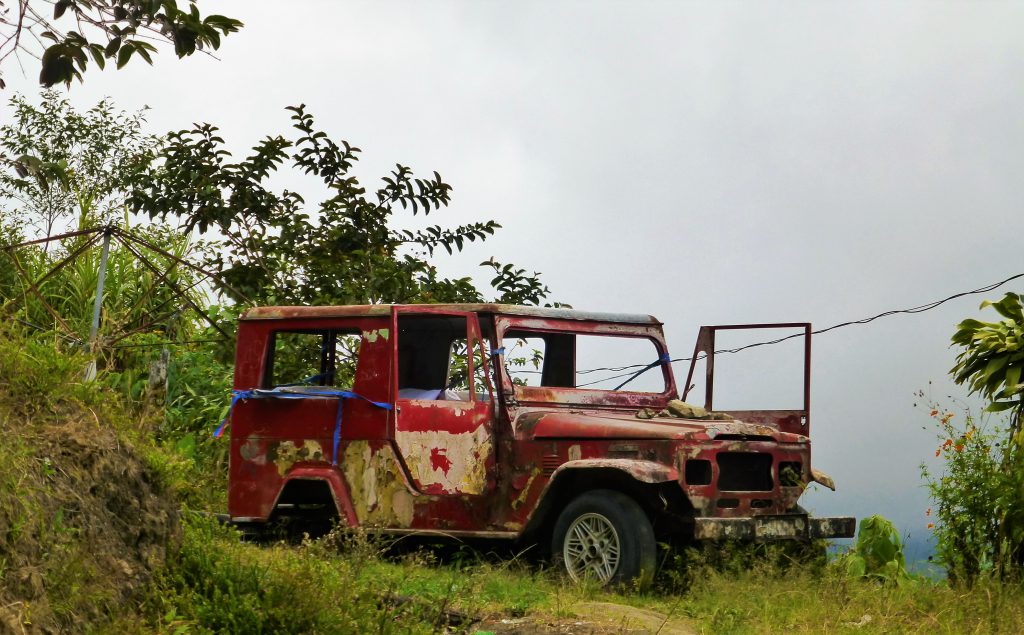
My Accommodation Tips for Every Budget:
Budget (€10-25):
- People’s Guesthouse – My choice, basic but cozy with great terrace
- Rice Homestay – Authentic with local family
- P&M Travelers Inn – With garden, terrace and shared kitchen
Mid-range (€25-50):
- 7th Heaven Lodge & Cafe – Clean, friendly staff & views of terraces
- Baleh Boble Guesthouse – Authentic cottages with unique location in the area
Comfort (€50+):
- Hiwang Native House Inn – Panoramic views and cottages in traditional Ifugao architecture
- The Banaue Grandview Hotel – Oldest hotel, colonial charm
Best Time to Visit the Rice Terraces
I was there in March, which was perfect. Here are the seasons at a glance:
Dry season (December-May): Ideal for trekking
- March-April: Green terraces full of rice
- December-February: Cooler, less green but beautiful light
Wet season (June-November):
- June-July: Rice planting, terraces filled with water (great for photography)
- August-November: Lots of rain, slippery paths, but fewer tourists
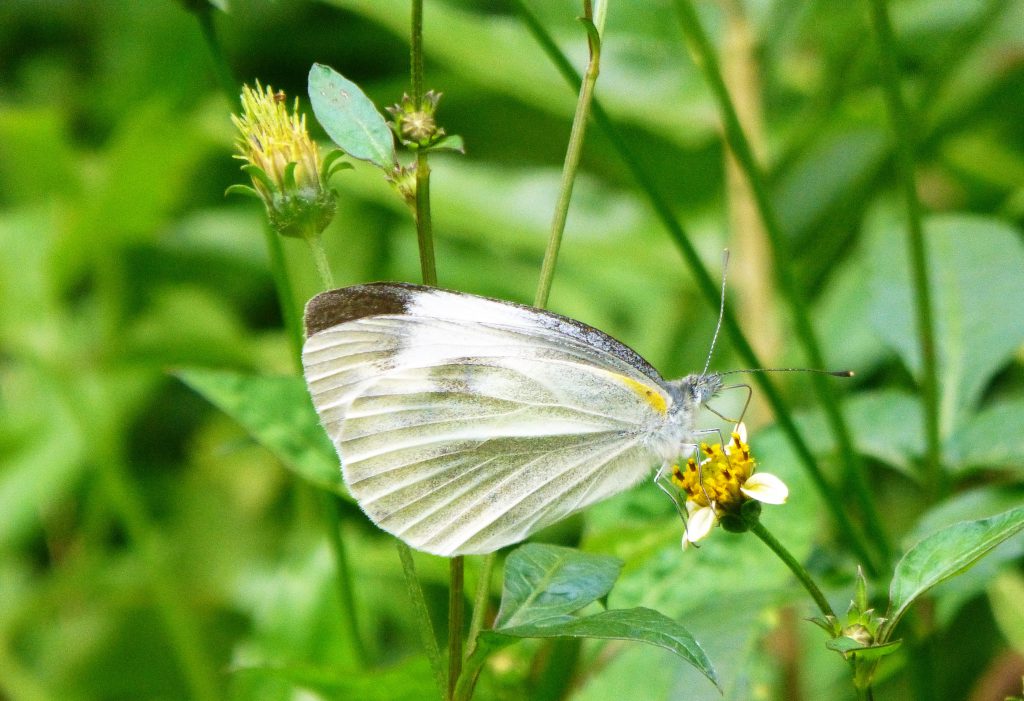
My Personal Tips
- Bring a reusable water bottle – better for the environment and budget
- Stay at least 2 nights – one day is too little to appreciate this area
- Book tours on-site at your guesthouse if you have time, cheaper and more fun
- Talk to your guide – their stories bring the area to life
- Consider staying overnight in Batad, the sunrise is supposed to be magical
- Leave early, less hot and better light
- Combine with Mt. Pulag or Baguio, in the same region
My Experience: Why This Was a Highlight
After that first overwhelming day in Manila, with all the contrast between rich and poor, this was exactly what I needed. The simplicity of life in the mountains, the hospitality of the people, and walking over those 2000-year-old terraces gave me such a feeling of connection with history and nature.
If I’d known earlier how beautiful it was, I would have stayed longer. But even in two days, I got a wonderful impression of this unique area.
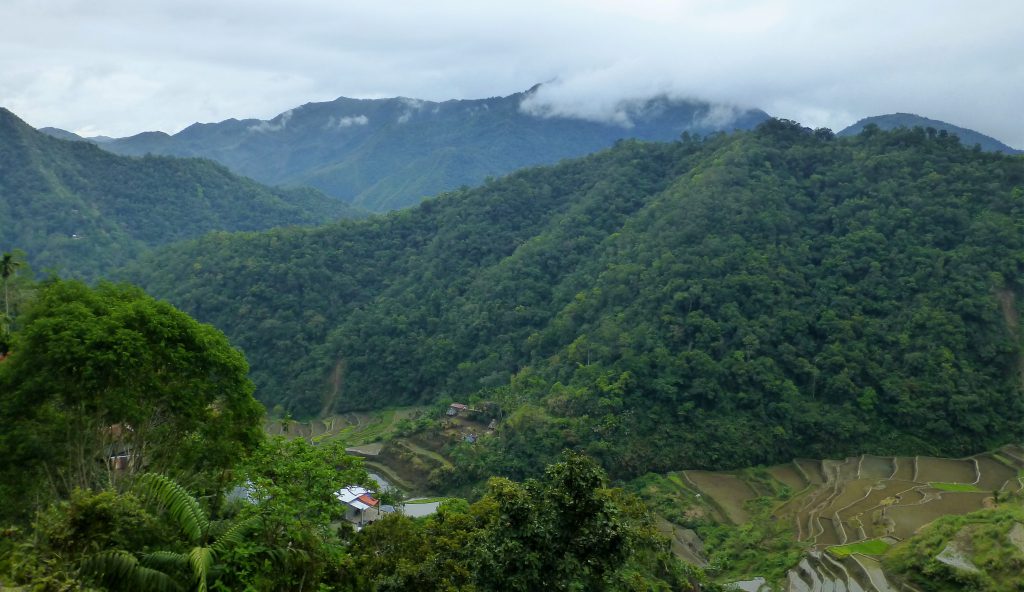
Combine Your Visit
Banaue is strategically located for other Luzon highlights:
- Mt. Pulag (2-3 days) – Highest mountain in Luzon, sea of clouds
- Baguio (1 day) – Summer capital, nice stopover
- Sagada (2-3 days) – Hanging coffins, caves, more rice terraces (high on my list)
- Vigan (1-2 days) – Colonial UNESCO town
Frequently Asked Questions (FAQ)
- How long to stay in Banaue? At least 2 full days for Batad and Hapao. 3-4 days if you also want Bangaan and to relax.
- Is it dangerous? No, Banaue is very safe. The paths can be slippery, but with a guide and good shoes, no problem.
- Can I go without a guide? Technically possible in Banaue center, but for Batad and Hapao guides are mandatory and recommended.
- What if I’m not fit? Bangaan is easier than Batad. Ask about adapted routes. But be honest: it is trekking.
- Best time for green terraces? March-May and September-October the terraces are greenest.
- Can I book in advance? Everything can be booked in advance. Tourist attractions are getting busier and busier. If you have enough time, you can book on-site for flexibility and better prices.
- Are there other activities? Museum in Banaue center, local market, weaving workshops, exploring more terraces.
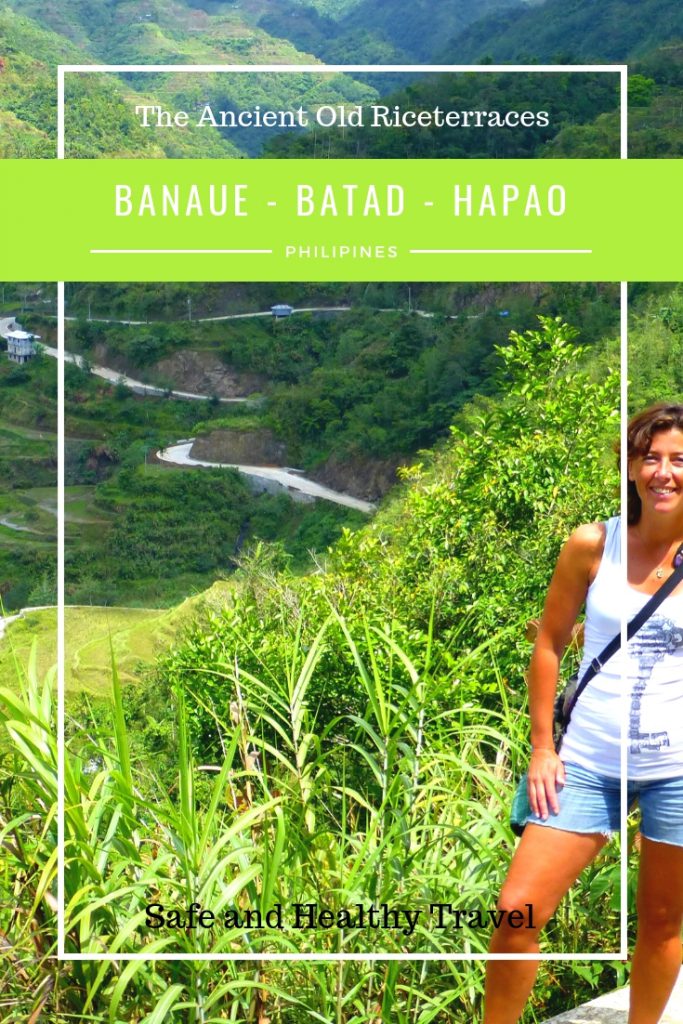
Want to read some other posts?
